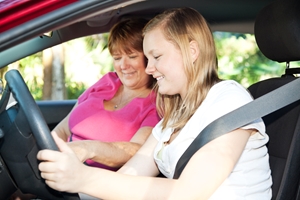 As with all the other states and territories, drivers in New South Wales must go through a strict testing system before being qualified to use the roads. According to the Roads & Maritime Services in NSW, data from the first quarter of this year indicated there were 311,639 learner licence holders in the state.
As with all the other states and territories, drivers in New South Wales must go through a strict testing system before being qualified to use the roads. According to the Roads & Maritime Services in NSW, data from the first quarter of this year indicated there were 311,639 learner licence holders in the state.
A further 167,254 held P1 licences while 280,337 had P2 licences. The majority of drivers in NSW (4,910,421) were on an unrestricted licence, making up a total of 5,669,651 licence-holders overall. Of these, 4,564,786 licences were registered in the Class C category (cars).
What licence class should I go for?
There are a variety of licence classes available to drivers in NSW, depending on the type of vehicle you wish to operate. Class C covers all vehicles up to 4.5 tonnes gross vehicle mass (GVM), which is the maximum recommended weight your vehicle can be when fully loaded.
Class R is for motorcycles, while Class LR, MR and HR cover light, medium and heavy rigid vehicles. Lastly, Class HC is for heavy combination vehicles and Class MC is for multi-combination vehicles such as Road Trains.
For most drivers, the Class C licence is sufficient. It enables you to drive cars, utilities, vans, some forms of light trucks, car-based motor tricycles and tractors.
Getting your licence
To be eligible for the first stage of the licencing system in NSW, you must be at least 16 years old. You will need to go to a NSW registry to give proof of your identity and then pass the Driver Knowledge Test (DKT). You can get the test and the Road Users’ Handbook in a variety of languages.
You can also head to the RMS website to get more information on what’s likely to be in the test, and some practice questions to help you prepare for the real thing.
Places for the DKT tend to be limited, so it’s a good idea to book ahead through the RMS website or at any motor registry.
Once you have your learner licence, this is valid for five years. You’ll also get a driver log book that you and your supervising driver can use to record the experience you get after the test. If you lose this you will need to pay for a replacement, so keep it handy.
Before you can try the driving test, you’ll need to have logged at least 120 hours of supervised driving in your book. This includes 20 hours minimum of night driving. You also need to have held your learners for at least 12 months.
If you have a one-hour driving lesson with a fully licenced official instructor, this equates to three hours of driving experience. That means you can get a maximum of 10 hours of lessons accepted as 30 hours of driving experience, but they need to be added to the Structured Lesson Record Keeper section of your log book to be recognised.
There are some exceptions to this rule. If you’re 25 years or older and you have a valid learner licence, you don’t need to complete the log book and there is no minimum time period you need to have held your learners permit.
You are also exempt from the log book rule if you previously held any other NSW, interstate or overseas driver’s licence that was not a learner class.
Once you pass the driving test, you’ll get a provisional P1 licence, which you need to have for at least 12 months before you can take the Hazard Perception Test (HPT) and move onto the P2 licence. Both of these have restrictions on driving a certain number of passengers and specific types of vehicles, so head to the RMS website for more information.
Once you have had your P2 for at least 24 months, you can take the Driver Qualification Test (DQT) to move to a full unrestricted licence.
your opinion matters: